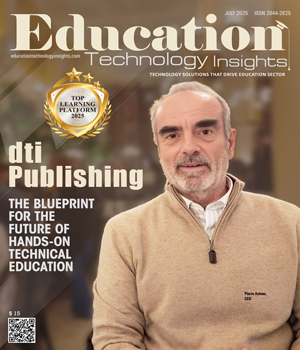THANK YOU FOR SUBSCRIBING
Be first to read the latest tech news, Industry Leader's Insights, and CIO interviews of medium and large enterprises exclusively from Education Technology Insights
The Formula to Entry-Level Tech Pipelines: Trust and Mentorship
Kenneth Sisco, IT Director, College of Engineering, Design and Computing, University of Colorado Denver
 Kenneth Sisco, IT Director, College of Engineering, Design and Computing, University of Colorado Denver
Kenneth Sisco, IT Director, College of Engineering, Design and Computing, University of Colorado DenverOne of the most challenging components of tech careers is finding that first job. Every position seems to require years of professional experience, and few employers are willing to take a risk on someone who has none. Higher education institutions provide a great deal of value through traditional education methods, but often struggle with the entry-level employment pipeline. Some work closely with industry partners to provide internships, but those are often highly selective and limited in number. Many institutions understand the value of providing on-campus opportunities through student employment, which is a fantastic opportunity for students to gain that entry-level experience to break into the workforce once they graduate, but far too few institutions truly provide that professional-level value for their student employees. They tend to funnel students into low-risk, low-responsibility roles such as answering phone calls, monitoring computer labs, and routing service requests. The greatest amount of value that can be provided to these students, however, is trust.
Our IT team within the College of Engineering, Design and Computing at CU Denver adopts a practice of what we call “Goals Meetings.” Each student employee meets individually with their manager and director at least twice per semester to understand what that employee hopes to gain during their time on the team – what types of technologies they hope to learn, what they want their career trajectory to look like, and the types of opportunities they would like to see. From these conversations, the manager and director identify projects that align with the strategic direction of the team and assign them based on what the students have expressed – interest in topics, opportunities, and trajectories. This is in addition to typical support tasks and is prioritized after helping customers directly. These projects vary wildly; some examples being: setting up a development environment for programming courses using Docker containers and Kubernetes, implementing new data center networking configurations using LACP binding and ACI, developing automation tools for repairing software configurations in computer labs, and responding to cybersecurity incidents such as Log4j. Many of these projects require technical skills that our team does not actively have, and they don’t arise frequently enough to justify a full-time position, so there is a high level of problem solving and analytical skills needed to work through them. As they learn, they are asked to document and teach those around them, so that the entire team can learn alongside them, and so that business continuity is not threatened by the temporary nature of their employment.
“The greatest amount of value that can be provided to these students, however, is trust.”
Our team then becomes a system of support for every team member. The manager and director on the team focus on project management, guidance, and mentoring – ensuring that everyone feels heard and continues to progress. The systems administrators on the team also serve as mentors, providing guidance and direction and helping students find paths forward when they feel stuck on a difficult technical issue. Everyone treats their time on the team as a learning opportunity and supports each other as such.
By trusting our student employees with complex technical tasks, we are providing them with professional-level opportunities that will help them enter the workforce as skilled technologists, and not just entry-level support professionals. We provide them with work they are interested in, which boosts morale and increases their engagement in the role. They feel trusted and valued. The projects they work on feel important, and they understand why it is valuable to the college. Add strong, inclusive hiring practices to this, and we have a formula for active engagement, minimal conflict, and a reliable team.
Our customer satisfaction metrics support this as well. Customer satisfaction ratings on support tasks are 99.6% in 2023 with a 39.6% response rate. Over 74.3% of faculty and staff in the college have expressed that they are either satisfied or very satisfied with IT in the college. Job placement for student employees working on our team is over 83%, with most of them working professional-level positions in the technology sector after graduation.
The best employment pipeline for students in higher education is strong mentoring and trust in on-campus employment opportunities. Provide them with challenging projects, trust them with growing and improving your practice, and ensure they understand the value behind what they are doing. The value for the students is high, the value for the university is high, and the results are fantastic.
Read Also
Our AI Crisis isn't Technical. It's Human.
4 Keys to Managing Change
Active Engagement is the Foundation of Effective Leadership
Empowering Leadership through Innovation in Higher Education
Redefining Readiness: A Path Toward a Technology-Agnostic Future
The New Era of Education

I agree We use cookies on this website to enhance your user experience. By clicking any link on this page you are giving your consent for us to set cookies. More info






















